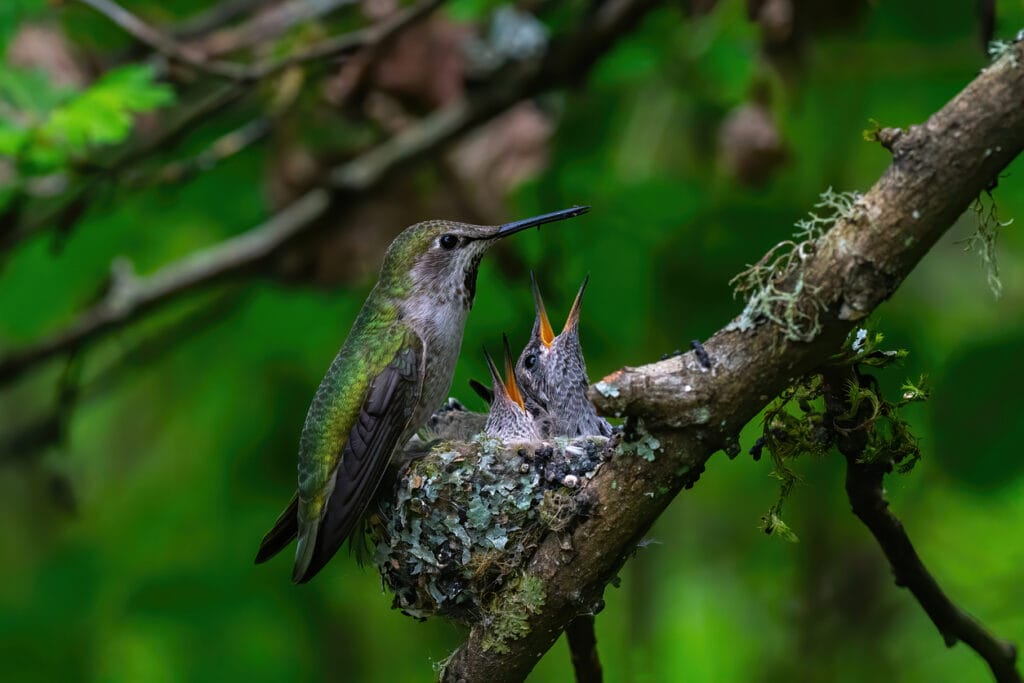
Hummingbirds are some of the most exquisite birds in the living world. Most bird-watchers find them fascinating to study for their captivating behavior and splendid appearance. Hummingbirds have earned their name because of the way their wings swiftly flap, creating a humming sound. Interestingly, since these birds just hover and never walk or hop like other birds, they have their own unique nesting habits and seasons. So when is nesting season for hummingbirds?
Hummingbirds’ nesting season varies depending on the species. They can be found earlier than their nesting season when they’re in search of a mate to start their mating season. This happens in tandem with finding a suitable nesting location.
Let’s dive into more details on when nesting season is for hummingbirds as well as more hummingbird facts.
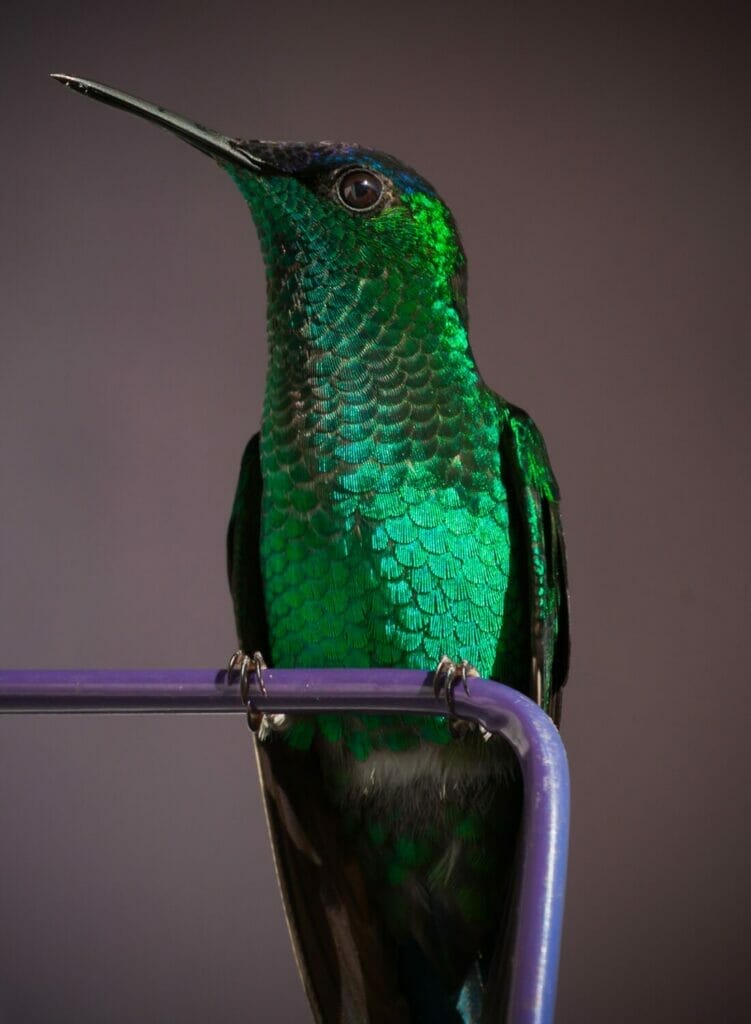
What Time of the Year Can Hummingbirds Be Found?
The American Birding Association (ABA) lists 24 members of the Trochilidae family. Included in that are the following species:
- Violetear
- Mango
- Starthroat
- Woodstar
- 2species of Mountain-gem
- 18 species of Hummingbird
Some of these are incredibly rare and only vagrant visitors to the U.S. Most of the species found regularly across continental America are migratory, wintering in Central and South America. And one species is resident on the West Coast all year round.
So, if you live from Washington to California, you might be lucky enough to see hummingbirds all year round. For everyone else, hummingbirds generally start to return to the U.S. any time from February onwards and leave again in October.
Why Do Some Hummingbirds Migrate in Winter?
Hummingbirds depend on flower nectar and insects from natural sources for nutrition. Such sources aren’t always accessible in the winter, which is why the birdies tend to migrate.
Another reason why some hummingbirds leave for the winter is that their little bodies can’t withstand cold weather unless they have a dependable food source. It is, of course, also a lot warmer during winter in Central and South America.
Two examples of migratory hummingbirds are the Rufous Hummingbird and Ruby-throated Hummingbird.
How Does Hummingbirds’ Mating Season Start?
The first thing male hummingbirds do is look for a convenient area where they can settle. What usually happens is that males become very territorial of their space and often show aggression toward intruder birds.
Alongside finding their territory, they start their search for a female hummingbird to mate with. One male hummingbird can mate with several females per season.
On the other hand, the female independently chooses a tree where she builds her own nest. This is also where she lays her eggs and raises her young ones for the rest of the nesting season.
What Happens During Hummingbirds’ Mating Season?

Upon finding its chosen female, the male hummingbird starts to attract it by putting on a show of aerial moves. Their shows include flapping their wings harder to create louder humming, making a display of their colorful plumage, dipping in air, or even performing a courtship song.
Once the female has given in to the male’s trials, with its nest already built, their mating only spans up to five seconds. The father hummingbird then abandons the mother for good, leaving her to do all the parenting work on her own.
How Do Female Hummingbirds Choose Nesting Locations?
When a female hummingbird chooses her nesting location, its primary goal is to build it in a secluded space, camouflaged safe from predators and environmental factors, like strong winds, rain, and the scorching sun.
This will allow the hummingbird to raise its young safely.
Nests are usually found among thick foliage in trees and shrubbery and their heights depend on the hummingbird species’ preference.
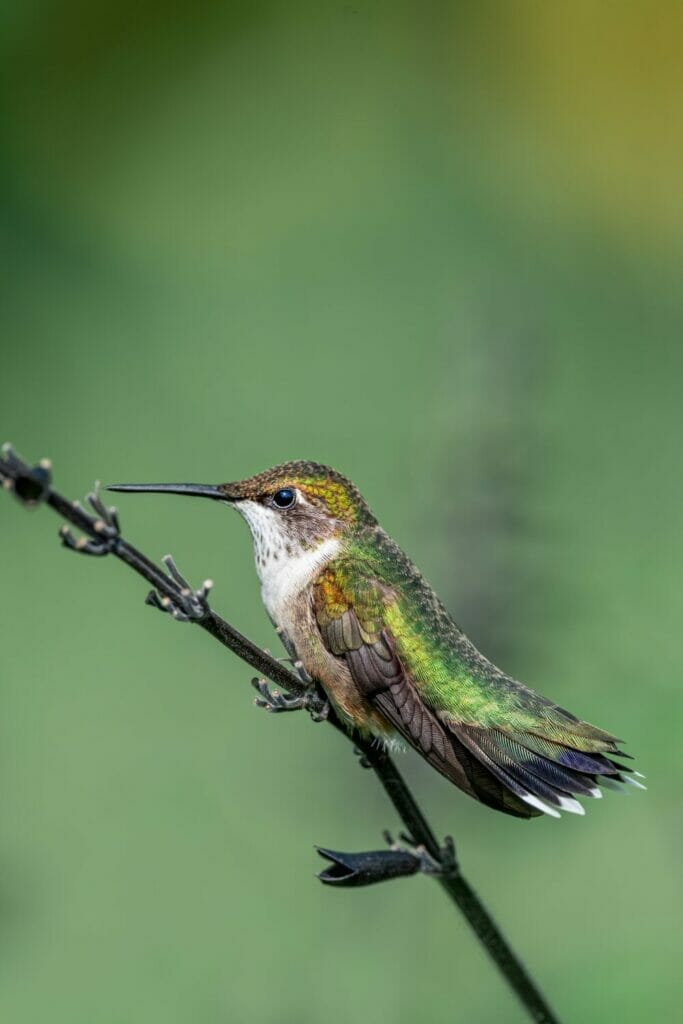
How Do Female Hummingbirds Build Nests?
Hummingbirds build nests with a variety of materials and are finished with them after mating takes place. Their nests are of relatively small size, measuring up to the size of a big golf ball, but it takes lots of effort to build one.
Despite how lightweight the bird, the nest, and its offspring are, the female keeps landing on
The bird gathers both soft and hard materials to build an elastic nest that can further stretch to accommodate the growth of its young ones. It uses things like twigs, cottony plant fuzz, leaves, feathers, and weaves all materials together with silken threads from spider webs.
This makes for a durable, yet flexible nest that can stretch during the offspring’s growth time to fit them.
In order for the female to perfect the nest to its liking, it picks off some of its plumage and adds it to its built nest. For final touches, it compresses the materials with its wings and presses into the center with its chest. The female hummingbird sometimes even uses its legs to solidify its nest materials.
What Happens After a Hummingbird Lays Its Eggs?
A hummingbird is known to lay from one to three eggs, with an average of two eggs most of the time. The eggs are the size of a coffee bean and are oval in shape.
The mother then remains in the nest, incubating its eggs for up to three weeks. It remains in the nest incubating the eggs for a period of 50 to 55 minutes after regular breaks to go feed. Hatching time depends on the hummingbird species and the climatic conditions of the region.
Author Note: When the mother welcomes its babies, it tends to them for up to three weeks, then they start to leave the nest to be on their own. They perch on the edges of their nest and practice flapping their wings for two weeks, until they launch into the air, at first shakily.
However, a mother can still tend to its baby hummingbirds for up to shortly less than a month, until they learn to independently fetch their own food.
A mother can sometimes tend to her nestlings while carrying eggs from another mate. In such cases, the hummingbird starts building a new nest while caring for her babies. Such tough birds!
What Happens When Nesting Season Is Over?
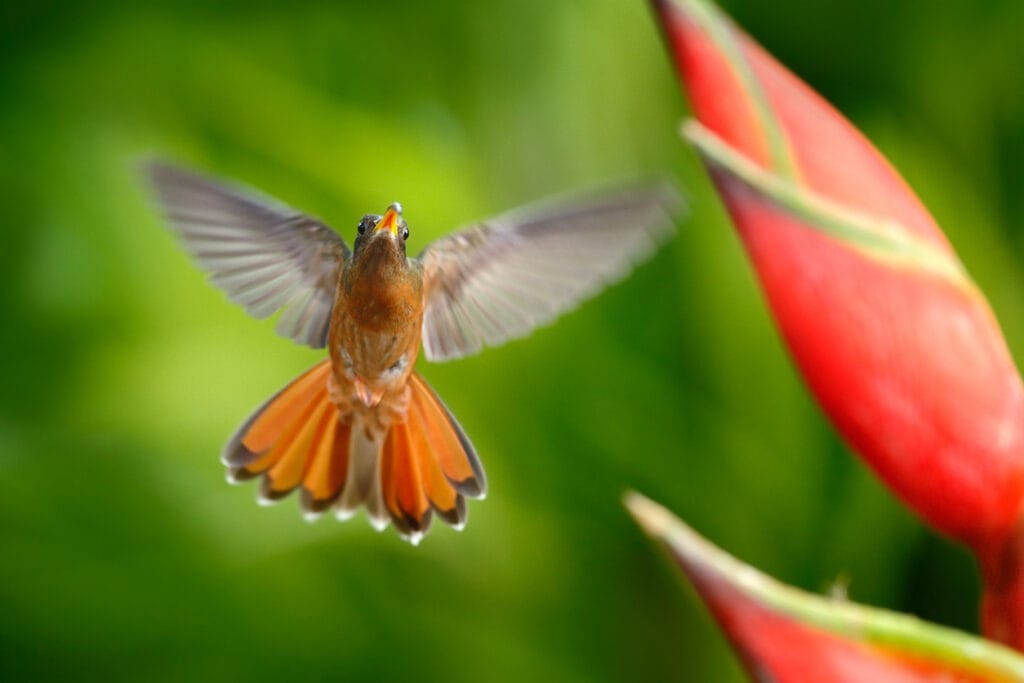
Nesting season for hummingbirds spans for a maximum of three months, depending on the bird species and the region they choose to nest.
Generally, and in Northern parts of the U.S., hummingbirds tend to nurture only one brood per nesting season. Sometimes more than one brood is raised per season. In Southern regions, where hummingbirds mostly stay all year, they may nest several times a year.
On occasion, when a nest is in a perfect location for further hummingbird brooding, the female returns to rebuild the nest for the next season, or build another one nearby.
Author Note: Sometimes unfortunate accidents strike. If a predator feeds on the eggs, the mother starts fresh by looking for a new mate to raise a new brood if there’s still time in the season. If the nest gets destroyed in any way, the female attempts to build a new nest.
On rare occasions, when the female fails to nest and brood for the season, it gives up for the season. It comes back the next season to try again.

How Can I Find a Hummingbird Nest?
Hummingbird nests are hard to find for their presence in hidden places, and can even go unnoticed by expert bird-watchers. The main timeframe for hummingbirds’ nesting season is February through the end of March.
Look for their nests in between high tree foliage and in small shrubs. Be careful not to mistakenly damage the nest, as it’s usually built on thin branches. If you stumble upon a female hummingbird, follow its movements closely.
The following are some tips and observations that may help you in your search for hummingbird nests:
- Sport on a pair of binoculars to be able to locate a nest inside thickets.
- Keep your ears peeled for their humming sounds. Their nests will be close to where they hover.
- Look for nests in shaded areas, where the nest can be as far away from the sun as possible.
- From afar, the nests can look like a cotton knot on a branch.
- Some unlikely places you can find nests on are electric or utility wires and ropes. They can even be found under bridges and anywhere inside or near buildings.
- You’re most likely to see a hummingbird nest while pruning a tree. Sadly, many people accidentally destroy them during the pruning activity, so be careful.
- Calliope Hummingbirds usually build several nests sequenced atop each other. Look for their nests on pine trees.
- Some hummingbirds, like the Broad-billed Hummingbird, nest on clotheslines.
- Hummingbirds like the Blue-throated Mountain-gem build nests on plants that have flowers.
Conclusion
To any bird enthusiast, the lifecycle of a hummingbird is one of the most fascinating things to study and observe.
Hummingbirds’ nesting season starts in the early spring when the males start looking for females to breed with. It continues with the mother tending to its nest, and then the nestlings until they set off in nature on their own.
Despite being the smallest birds that ever existed, hummingbirds are feisty and hardworking creatures.
If you’re eager to witness the magic of the hummingbird nesting season, keep your eyes wide open! We hope you enjoyed this article on when is nesting season for hummingbirds.
Fly high friends!
FAQ
Audubon suggests that you plant tubular flower producing plants to give the birds a ready source of food. Then fill in with shrubbery and have some small deciduous trees for them to nest in.
No, they will not use them. Nest boxes do not reflect the natural habitat that hummingbirds use so they will not use them. Most likely they will be taken over by sparrows or other common backyard birds.
The nest size of the Anna’s Hummingbird is less than 2 inches across and down. It is a cup size and little bigger than a ping pong ball sliced in half.
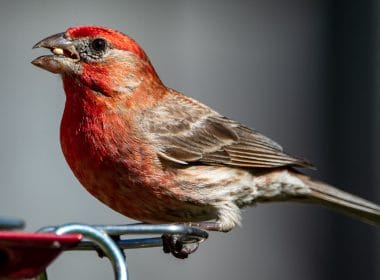

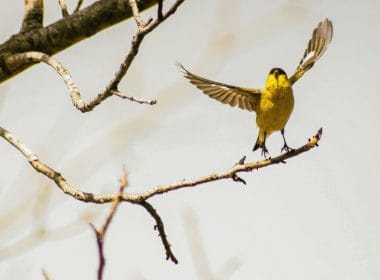

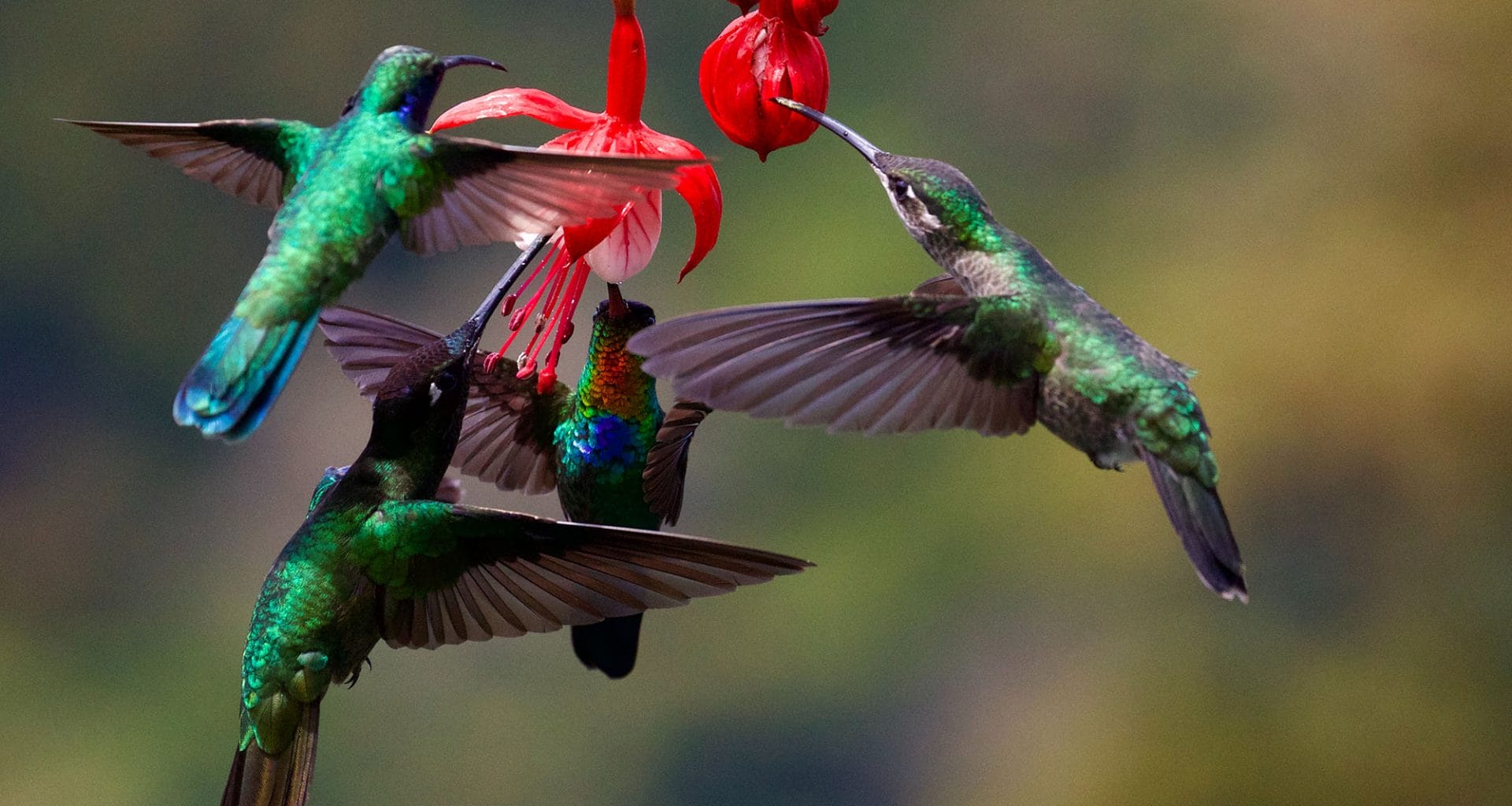
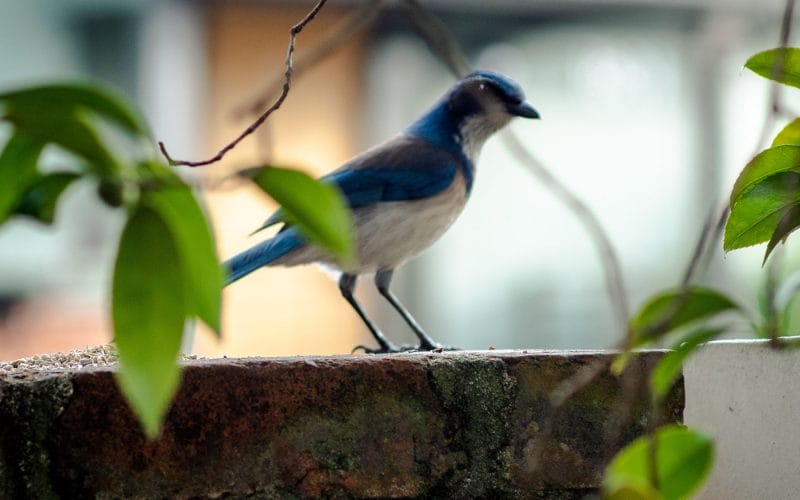
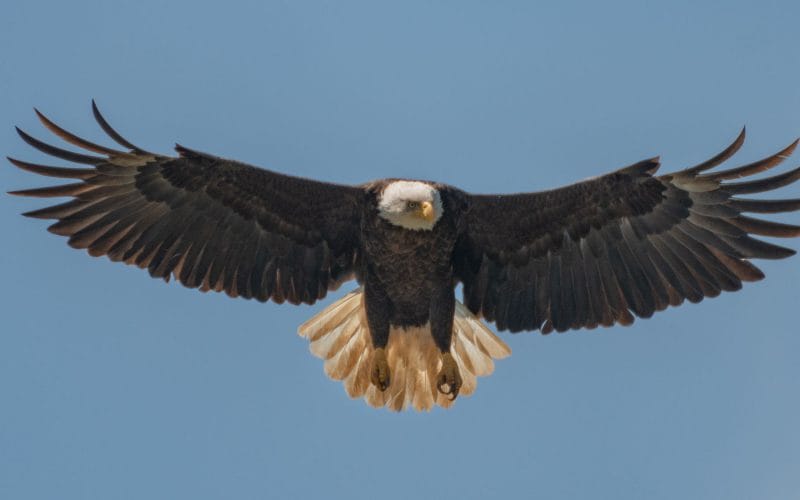
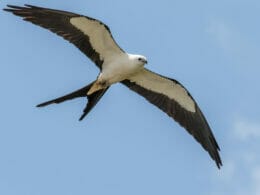
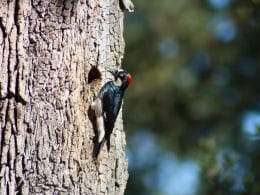
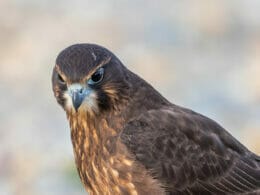

We had lots of hummingbirds up to about three weeks ago and “then there were none”. The last few days 1-2 are coming around. Any idea why they just left all of a sudden?